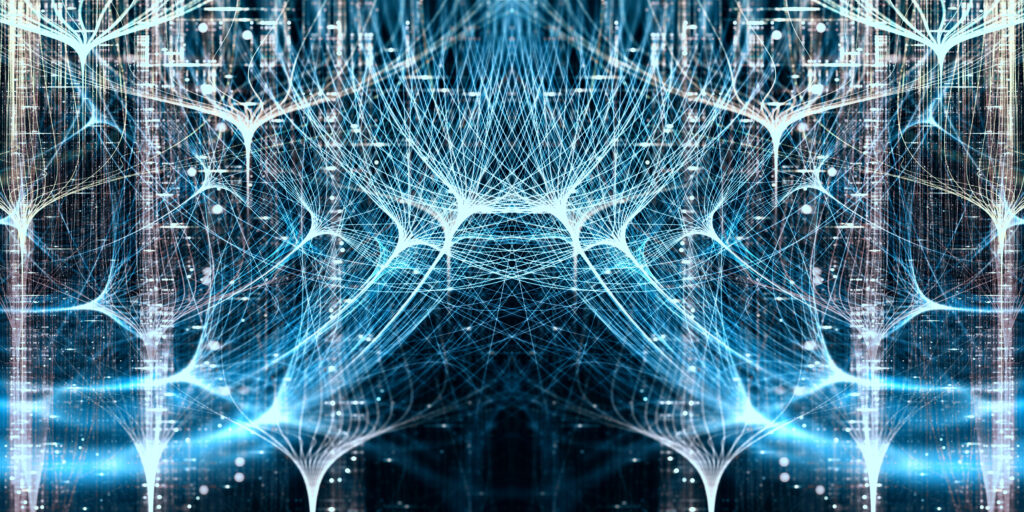
Machines That Think and Act: The Future of AI & Autonomous Systems
The integration of advanced neural networking and Retrieval-Augmented Generation (RAG) technologies into robotics and drone swarms is spearheading a revolution in autonomous systems. Coupled with real-time sensors, these technologies empower robots and drones to perform complex tasks quickly, efficiently, and without direct supervision, paving the way for innovative applications and ethical debate across various industries.
Neural Networks and RAG: Enhancing Autonomous Systems
Neural networks are a cornerstone of modern artificial intelligence. They enable AI robots and drones to mimic human-like decision-making by processing large amounts of data through layers that simulate neural connections in the human brain. This capability allows autonomous systems to learn from experiences, adapt to new situations, and make decisions with minimal
human oversight.
RAG technology further enhances this by combining the generative capabilities of neural networks with the rapidly-growing power of information retrieval. This hybrid approach allows drones and robots to pull contextual data from vast databases instantaneously, refine their decisions based on past information, and execute tasks more accurately.
In the context of drone swarms, this combination allows for unparalleled coordination and efficiency. In environmental monitoring, each drone in a swarm can access real-time data about atmospheric conditions, access historical data about similar conditions, and adjust their sensors and flight patterns accordingly to optimize data collection. The amalgamated data set can be
shared among the collective in real time, allowing for adjustments and actions to be implemented.
Real-Time Sensors: The Eyes and Ears of Autonomous Systems
Real-time sensors are critical components that feed data into the neural networks and RAG systems. These sensors vary widely, from visual cameras and infrared to ultrasonic sensors, each providing different types of data necessary for comprehensive environmental understanding. In robotics, sensors detect obstacles, measure distances, and ensure safe navigation in complex environments.
For drones, sensors are indispensable for tasks such as precision agriculture, where they assess crop health, moisture levels, and pest presence, enabling precise intervention.
The integration of these sensors with neural networks allows autonomous systems to process and react to live data on the fly. This real-time processing is vital for applications requiring immediate responses, such as search and rescue operations where speed and accuracy can save lives.
Applications Across Industries
The practical applications of neural network and RAG-powered robotics and drone swarms are vast and varied. In agriculture, drone swarms analyze crop health over large areas, predict yields, and intelligently manage resources like water and pesticides, dramatically increasing efficiency and sustainability. In logistics, robotic systems equipped with these AI technologies optimize warehouse operations, manage inventory, and streamline supply chains, reducing costs and improving service delivery.
Moreover, in the public safety domain, drone swarms can be deployed in disaster-stricken areas, using their advanced sensor suites and AI capabilities to locate survivors, assess structural damage, and deliver essential supplies. The real-time data processing and decision-making capabilities of these drones make them invaluable in managing complex, evolving situations where human responders are limited by physical risks and time constraints.
Ethical Considerations
The ethical considerations of autonomous robotics fed by RAG added to live data via sensors and receivers are significant. The existence of machines gathering information “in the wild” certainly raises concerns about privacy, data storage, privacy, and security.
When machines, whether singular or collective, are making decisions without immediate human oversight, we need to be very careful about the parameters and restrictions in place. We see this debate with self-driving cars in situations where either a driver or a pedestrian will be put in danger. The vehicle has to decide (or quickly alert its human pilot to assume control).
I am not writing to debate the specific decisions. We need to ensure that we have proper tracking, data storage, and audit capabilities to understand each decision made by a machine (or collective) that is collating data and ‘thinking’ faster than a human can track, and potentially looking for innovative solutions when Generative AI is added to the mix.
In addition, even a data store designed to protect specific information might see those data points revealed in the results of decisions that incorporated them. Humans are good at context, and we can trace a decision back to the data that informed it.
Challenges and Future Directions
Despite their potential, the deployment of these advanced autonomous systems faces significant challenges. Privacy concerns arise, especially with drones capable of detailed surveillance. There is also the issue of ensuring that the AI systems make ethical decisions, particularly in scenarios involving human safety. Furthermore, the technical challenge of maintaining robust communication within swarms and ensuring the security of transmitted data is critical, especially as these systems become more integrated into critical infrastructure.
Looking ahead, the future of robotics and drone swarms lies in further integration of AI technologies. Advancements in edge computing could allow for faster processing at the device level, reducing reliance on central servers and speeding up decision-making. Additionally, as AI models become more sophisticated, the next generation of autonomous systems will likely exhibit even greater autonomy and decision-making capabilities, handling more complex tasks with less human intervention.
Conclusion
The fusion of neural networks, RAG, and real-time sensors in robotics and drone swarms is not just transforming industries; it is setting the stage for the future of autonomous operations. These technologies will continue to evolve and mature, and they promise to unlock incredible new potentials. Autonomous systems will continue to become more capable, efficient, and indispensable across all walks of life. We should absolutely continue to develop these capabilities with full consideration of the ethical implications, physical and otherwise.





